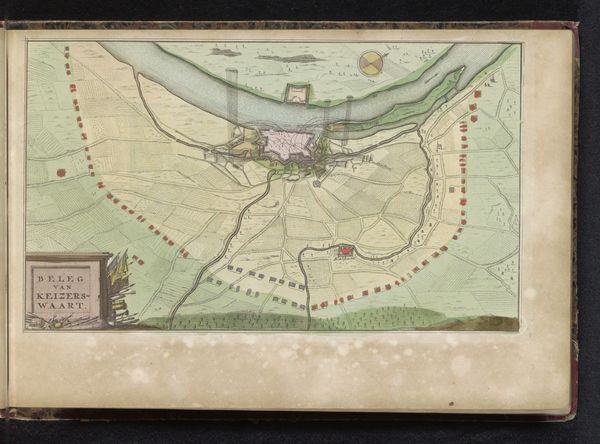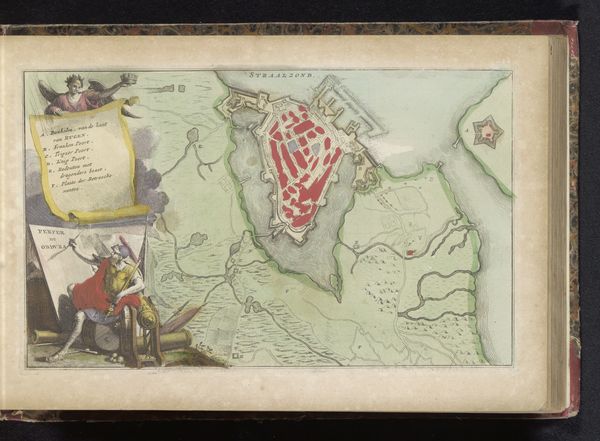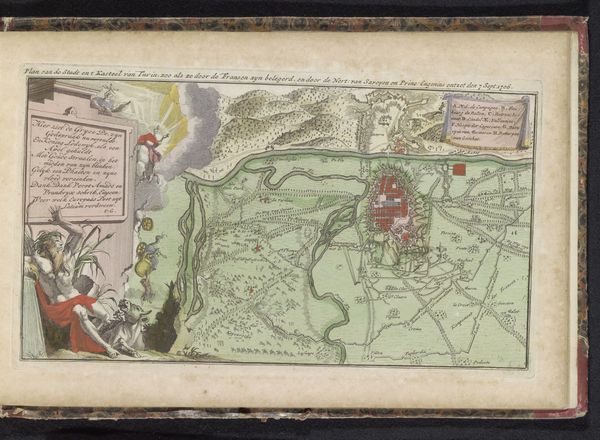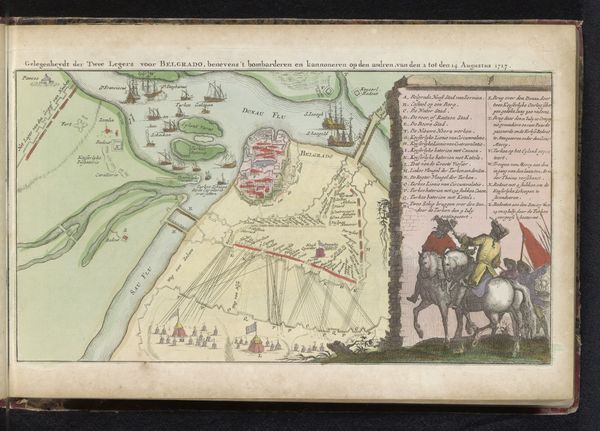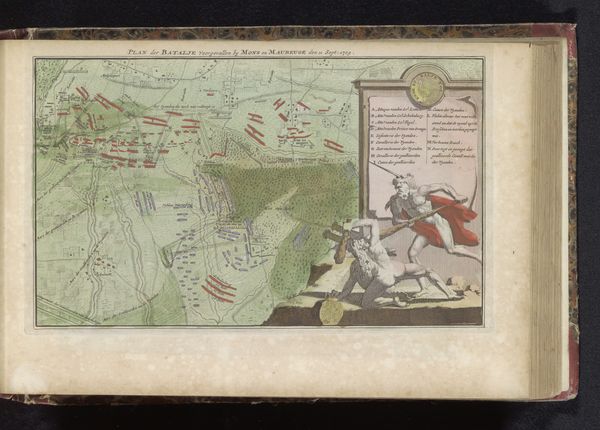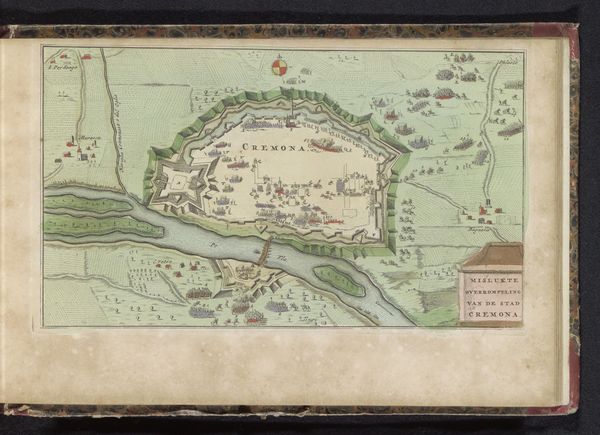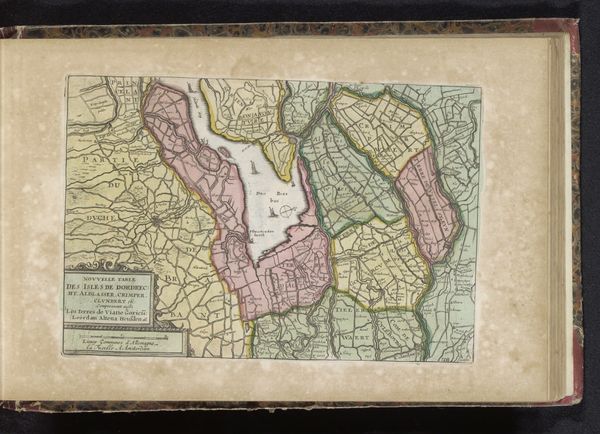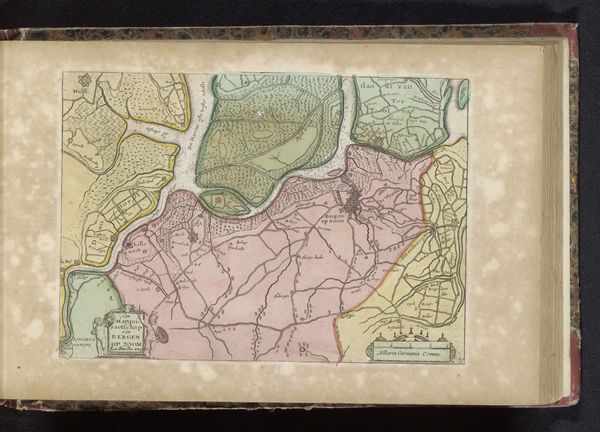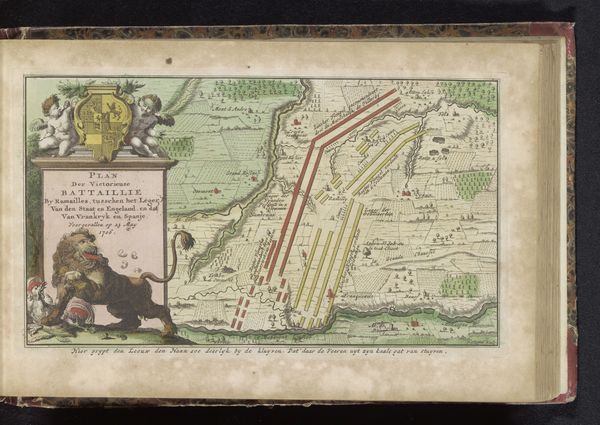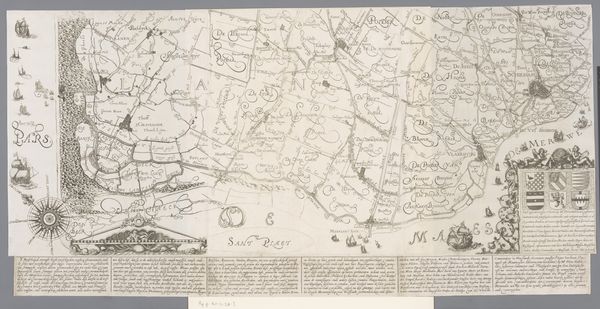
painting, watercolor
#
baroque
#
painting
#
landscape
#
watercolor
#
coloured pencil
#
history-painting
Dimensions: height 163 mm, width 280 mm
Copyright: Rijks Museum: Open Domain
Curator: It is a watercolor from 1735 whose creator goes unnamed; it pictures the "Slag bij Denain, 1712". It seems the Battle of Denain. What jumps out to you? Editor: Well, at first glance, the use of color is quite striking. It almost neutralizes the violence one would expect from such a depiction. The pastel palette gives it a feeling of… distance, I suppose. It makes the historical event appear much more calculated. Curator: Exactly. The cool tones help remove the immediacy, emphasizing strategy. We're seeing not just a battle, but a visual distillation of power relations and imperial ambitions. The various symbols employed—flags, the lion—are deliberately composed. Each color chosen surely relates to faction, land, and, therefore, dominance. Editor: That’s a good point. But what I am also drawn to is how abstracted it is, how it almost looks like a map laid out rather than the lived brutality of a battle scene. What interests me here is how it seems more a technical drawing and, even further, how this drawing comes into being. The watercolor and colored pencil, chosen because they are inexpensive and easy to work, almost speak of an academic practice and, therefore, of the process of control. Curator: True. But remember the purpose. A patron commissioned it, not merely to record the materiality of battle but to solidify and display triumph. This "Battle of Denain," abstracted as it is, serves as a visual reminder of who holds the land. Look at the detailed inking within the lines—such labor! Editor: I see your point; all the same, one element I would love to learn more about is that use of cheap watercolor: why it looks the way it does and what were the means and the access to material at the time it was made? Curator: Interesting point, this colored symbolism, made from mundane materiality…! It challenges my expectations, definitely forces us to revisit these displays of power and victory with more questioning and scrutiny! Editor: Indeed, it all invites us to understand art not just as aesthetic value, but as objects of social and economical understanding, as cultural memory embedded in paint and color.
Comments
No comments
Be the first to comment and join the conversation on the ultimate creative platform.

